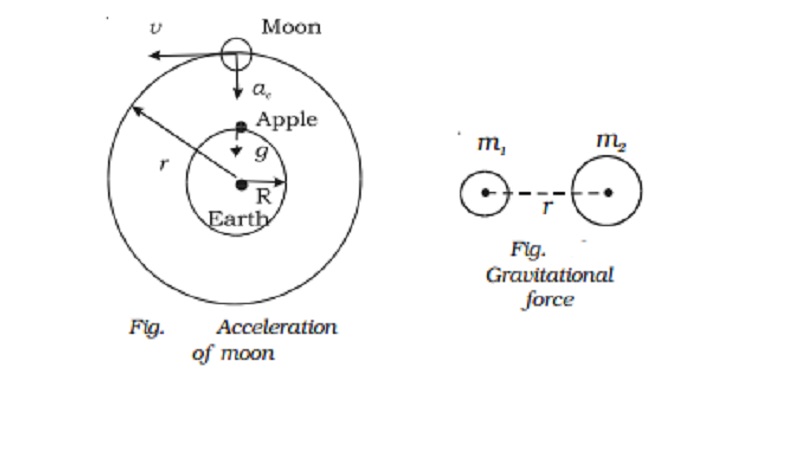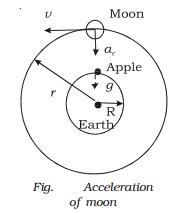Chapter: 11th 12th std standard Class Physics sciense Higher secondary school College Notes
Newton's law of gravitation

Newton's law of gravitation
The motion of the planets, the
moon and the Sun was the interesting subject among the students of Trinity
college at Cambridge in England.
Newton was
also one among
these students. In 1665, the college was closed for an indefinite period
due to plague. Newton, who was then 23 years old, went home to Lincolnshire. He continued to think about
the motion of planets and the moon. One day Newton sat under an apple tree and
had tea with his friends. He saw an apple falling to ground. This incident made
him to think about falling bodies. He concluded that the same force of
gravitation which attracts the apple to the Earth might also be responsible for
attracting the moon and
keeping it in its orbit. The centripetal acceleration of the moon in its orbit
and the downward acceleration of a body falling on the Earth might have the
same origin. Newton calculated the centripetal acceleration by assuming moon's
orbit (Fig.) to be circular.

Acceleration due to gravity on
the Earth's surface, g = 9.8 m s-2
Centripetal acceleration on the
moon, ac = v2/r
where r is the radius of the
orbit of the moon (3.84 × 108 m) and v is the speed of the moon.
Time period of revolution of the
moon around the Earth,
T = 27.3 days.
The speed of the moon in its
orbit, v = 2πr
/T
v
= = 1.02 × 103 m s−1
Centripetal
acceleration, ac = v2/r
= 2.7 × 10−3 m s−2
Newton assumed that both the moon
and the apple are accelerated towards the centre of the Earth. But their
motions differ, because, the moon has a tangential velocity whereas the apple
does not have.
Newton found that ac was less than g and hence concluded that force
produced due to gravitational attraction of the Earth decreases with increase
in distance from the centre of the Earth. He assumed that this acceleration and
therefore force was inversely proportional to the square of the distance from
the centre of the Earth. He had found that the value of ac was about 1/3600 of the value of g, since the radius of the lunar orbit r is nearly 60 times the radius of the Earth R.
The value of ac was
calculated as follows :
Ac/g
= (1/r2) / (1/R2)
= 1/3600
Ac
= 9.8/3600 = 2.7 × 10−3 m s−2
The law states that every particle of matter in the universe
attracts every other particle with a
force which is directly proportional to the product of their masses and
inversely proportional to the square of the distance between them.

Consider two bodies of masses m1 and m2 with their centres separated by a distance r. The gravitational force between them
is
F
α
m1m2
F α 1/r2
F = G m1m2 / r2
where G is the universal gravitational constant.
If m1 = m2
= 1 kg and r = 1 m, then F = G.
Hence, the Gravitational constant
'G' is numerically equal to the gravitational
force of attraction between two
bodies of mass 1 kg each
separated by a distance of 1
m. The value of G
is 6.67 × 10−11 N m2 kg−2 and its dimensional formula is M−1 L3 T−2
Special features of the law
The gravitational force between two bodies is an action and
reaction pair.
Related Topics